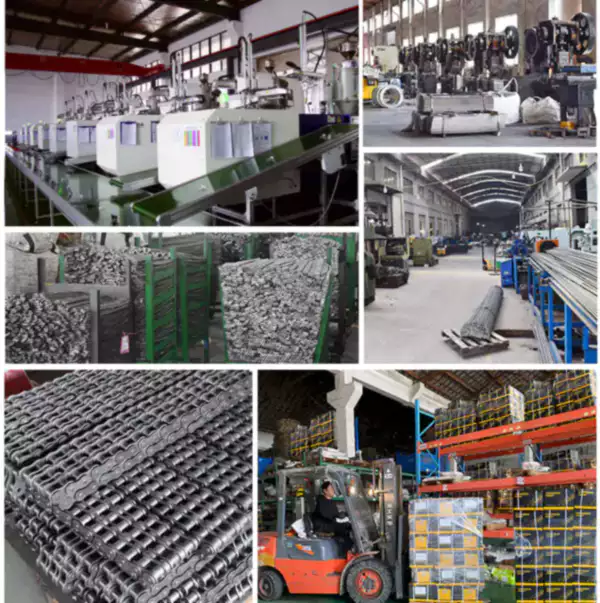Introduction
When it comes to optimizing the efficiency of gripper chains, one crucial factor that cannot be overlooked is the chain speed. The speed at which the chains operate plays a significant role in determining their overall performance and effectiveness. In this article, we will delve into the impact of chain speed on gripper chain efficiency and explore its various implications.
Understanding Chain Speed
In order to comprehend the relationship between chain speed and gripper chain efficiency, it is essential to first have a clear understanding of what chain speed entails. Chain speed refers to the velocity at which the chain links move in a mechanical system. It is typically measured in feet per minute (FPM) or meters per minute (MPM) and can significantly influence the performance of gripper chains.
The Effects of Chain Speed on Gripper Chain Efficiency
1. Enhanced Gripping Power
Higher chain speeds result in increased gripping power for the gripper chains. This is due to the higher velocity at which the chains engage with the objects they need to grip. The increased gripping power allows for more efficient handling of materials, ensuring a smoother and faster workflow.

2. Reduced Wear and Tear
Optimal chain speed helps to minimize the wear and tear on the gripper chains. When the chains operate at the appropriate speed, there is less strain on the chain links, reducing the chances of breakages or damage. This ensures a longer lifespan for the gripper chains and reduces maintenance costs.

3. Improved Accuracy
Chain speed also plays a crucial role in the accuracy of the gripper chains. Higher speeds allow for more precise movements, enabling the chains to accurately position the objects they are gripping. This level of precision is particularly important in industries where precision is paramount, such as manufacturing and assembly lines.

4. Optimal Performance
By selecting the appropriate chain speed, the gripper chains can achieve optimal performance. The right speed ensures that the chains operate efficiently without wasting unnecessary energy or causing undue stress on the system. This results in improved productivity and overall performance.
5. Safety Considerations
Chain speed also plays a crucial role in maintaining a safe working environment. Excessively high speeds can pose a safety risk, leading to accidents or damage to equipment. On the other hand, operating below the recommended speed range can result in inefficient performance and potential hazards. Therefore, it is essential to find the balance between speed and safety when using gripper chains.
Gripper Chains Purchasing Guide
| Factors to Consider | Guidelines |
|---|---|
| Load Capacity | Choose gripper chains that can handle the required load capacity without compromising efficiency. |
| Material Compatibility | Select gripper chains that are compatible with the materials being handled to ensure optimal performance and longevity. |
| Chain Speed Range | Determine the appropriate chain speed range based on the specific application requirements for optimal efficiency and safety. |
| Maintenance Needs | Consider the maintenance requirements of the gripper chains to minimize downtime and prolong their lifespan. |
| Manufacturer Reputation | Choose gripper chains from reputable manufacturers known for their quality and reliability. |
Sprockets for Gripper Chains
The relationship between gripper chains and sprockets is one of interdependence and critical importance. Sprockets are the toothed wheels that mesh with the gripper chain links, providing the necessary power transmission and control. Without properly matched sprockets, the efficiency and performance of gripper chains would be severely compromised.

Our company recognizes the significance of this relationship and offers a wide range of sprockets compatible with various gripper chain models. Our sprockets are designed to ensure optimal engagement, precise alignment, and efficient power transmission, enhancing the overall performance of gripper chains in different industrial applications.
Our Advantages
1. Extensive Industry Experience: With years of experience in the production of gripper chains, we have gained valuable insights and expertise in meeting diverse customer needs.

2. Customization Options: We offer personalized solutions, allowing customers to tailor the gripper chains to their specific requirements, ensuring optimal performance and efficiency.
3. High-Quality Materials: Our gripper chains are manufactured using premium materials that guarantee durability, reliability, and extended service life.
4. Rigorous Quality Control: We implement strict quality control measures at every stage of production to ensure that our gripper chains meet the highest standards of quality and performance.
5. Competitive Pricing: We strive to provide cost-effective solutions without compromising on the quality and performance of our gripper chains, offering excellent value for our customers.
Q&A
Q: What is the recommended chain speed for gripper chains?
A: The recommended chain speed for gripper chains depends on various factors such as the application, load capacity, and material being handled. It is crucial to consult the manufacturer's guidelines and consider the specific requirements of the operation.
Q: How often should gripper chains be inspected for wear and tear?
A: Regular inspection of gripper chains for wear and tear is highly recommended. The frequency of inspections may vary depending on the intensity of use, but it is advisable to conduct visual checks and preventive maintenance regularly to identify any potential issues.
Q: Can gripper chains be used in high-temperature environments?
A: Gripper chains designed for high-temperature environments are available. It is important to choose gripper chains specifically designed to withstand the elevated temperatures to ensure optimal performance and prevent premature failure.
Edited by Zqq.
